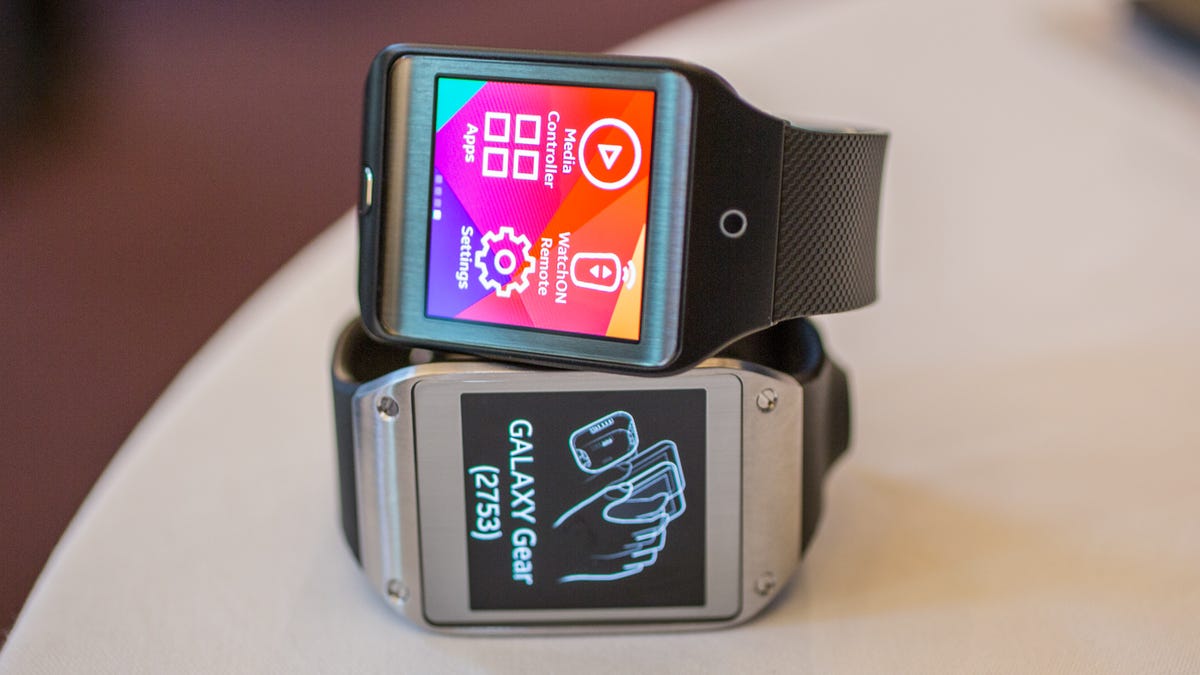A standalone Samsung Gear could be a sign of things to come
Samsung is rumored to create a version of the Gear with its own cellular connection.

The Korean electronics giant is reportedly working on a version of the
Samsung, for its part, declined to comment.
What would a Gear with cellular capabilities do? For starters, it would allow you to make and receive phone calls without first connecting it to a smartphone. But more broadly speaking, it allows you to get the notifications, fitness tracking capabilities, and other bells and whistles without the need of smartphone.Most wearables on the market today, including those from Samsung, require users to tether to smartphones via Bluetooth to perform most tasks. Some device makers are putting more functionality in the wearables themselves, such as Samsung's new Gear 2 allowing users to listen to songs even when out of a smartphone's Bluetooth range. None have gone so far as to remove the need for a smartphone.
Smartwatches won't completely replace smartphones for some time, but creating a standalone Gear -- even if just in Korea at first -- is a sign of what's to come. Eventually, people will be connected to the Internet and to their friends and family through their clothing, jewelry, or possibly even smart contact lenses. Technology will recede into the background, and it won't be like wearing a smartphone strapped to the wrist.
Right now, it's hard to make a really strong selling point for most smartwatches. Few people are willing to shell out $300 for simple notifications, and it's often easier to just pull out a phone to check emails or do other tasks. Samsung and others are pushing the health and fitness features of their devices as a way to attract buyers, but for devices such as Gear 2, that's only part of what they can do. If someone could also check and respond to emails and field phone calls from a watch while out on a run -- and with the smartphone left at home -- it becomes a much more attractive proposition.
The wireless industry would certainly be for it. The carriers are looking to hook up anything and everything with a cellular connection, and would love a line of connected smartwatches to push alongside smartphones. An AT&T executive recently told CNET that he expected more connected watches to pop up this year.There certainly are some drawbacks to a standalone Gear, at least in its current form. The components used in smartwatches today are nowhere near as powerful as those in smartphones. That, as well as the small screen size, limits the type of apps that can be used and how quickly the watch computes. Just imagine watching a movie on the 1.6-inch screen of the Gear 2.
Battery life will also become a bigger concern once cellular connectivity is incorporated. People already have to charge their smartwatches much more often than conventional watches. Samsung said it improved the Gear battery life with the newest model of its wearable, but any gains would be wiped if the device is constantly connecting to a wireless network.
Then there's cost. While carriers like Verizon and AT&T would love to push these devices, it's unclear whether consumers will be willing to foot the bill for such expensive products -- particularly ones that might weigh on their existing data plans.
Even though there are some big challenges to making standalone wearable devices, they're all things Samsung and other device makers can overcome. It likely won't be too long before they figure it out.

